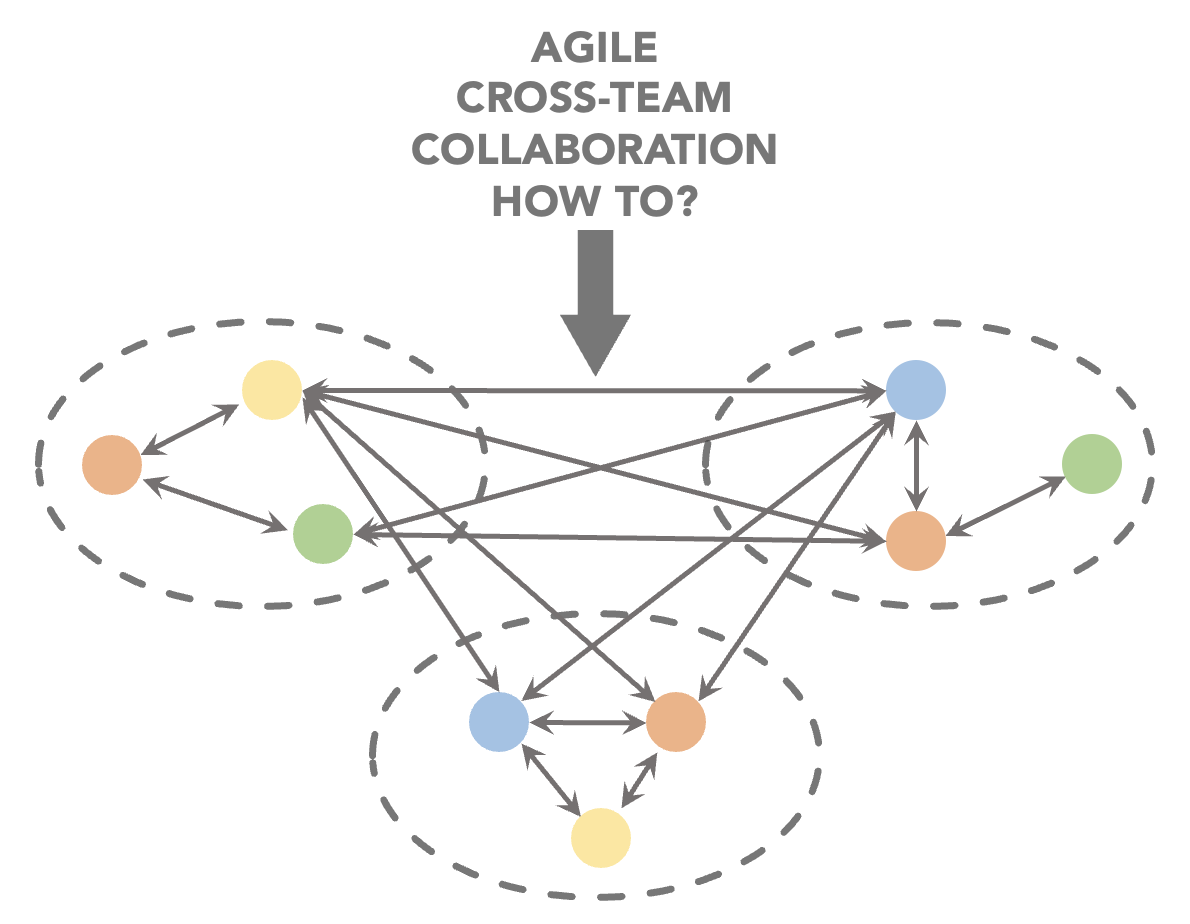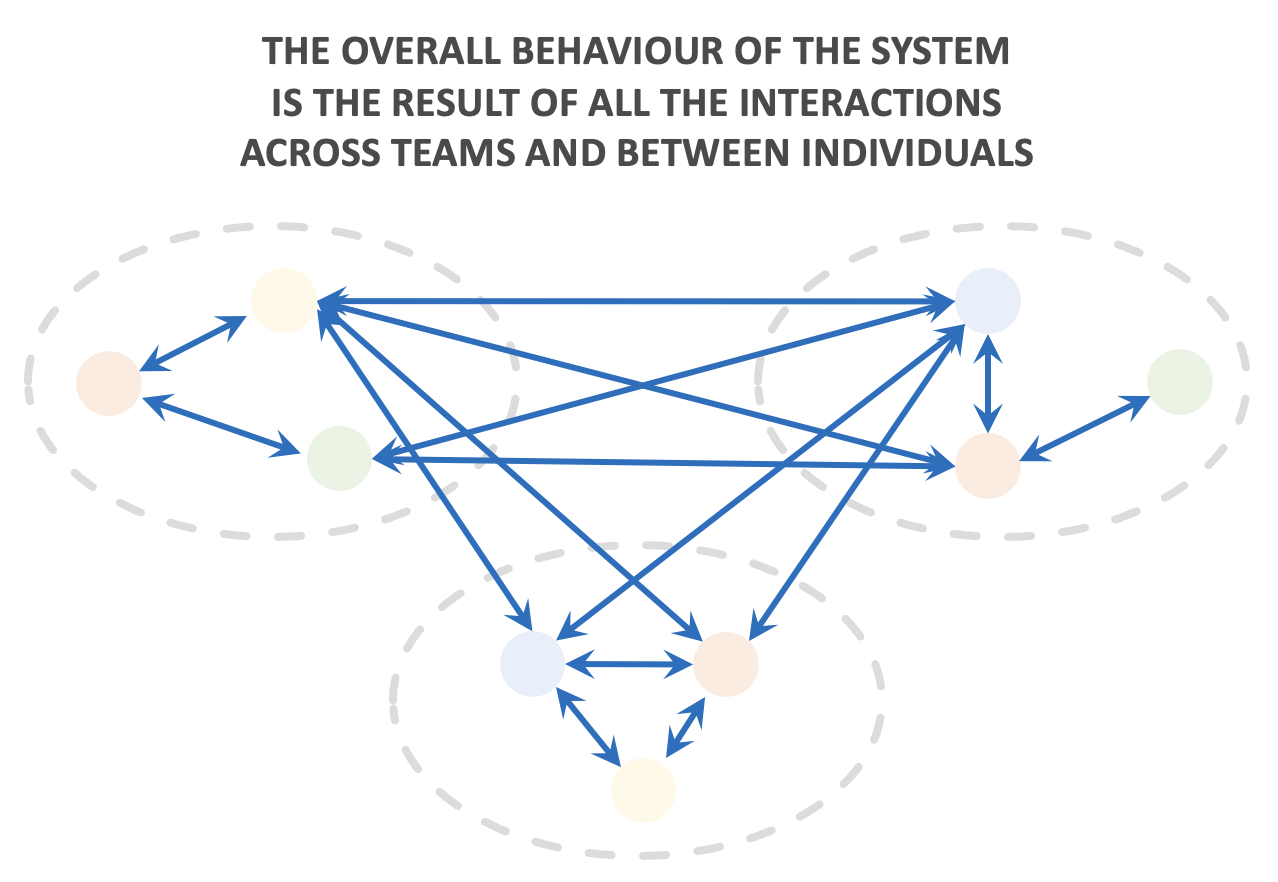Agile cross-team collaboration HOW-TOs (4-part)
This post is a four-part deep dive into the How-Tos of making Agile cross-team collaboration frictionless and enjoyable, in one word: effective. That is one of the most consequential topics for successfully adopting Agile beyond one team. Ironically, none of the current “scaled” solutions cut it.

PART ONE
Acknowledgements
Thanks to those that contributed to this post, reviewed it and made suggestions for improving it:
Jon Kern (co-author of the Agile Manifesto), Matthew Skelton (co-author of Team Topologies), Mark Dalgarno (Agile conferences organiser, Agile professional), Carlo Beschi (Agile professional), Carlo Volpi (Sr Programme Manager), Luca Cicale (Senior Application Architect and Developer).
Summary
This post explores why Agile cross-team collaboration is fundamental, why current solutions for cross-team collaboration are flawed, and when Agile cross-team collaboration is really needed. It describes how to pursue good Agile cross-team collaboration. And it concludes arguing whether cross-team collaboration should be embraced or avoided.
Why is Agile cross-team collaboration fundamental?
Teams and organisations are Human Complex systems where people are the most valuable, adaptable, and essential element. Because of our social nature, the relationships and the interactions between individuals and teams are fundamental. The overall behaviour of such Human Complex systems results from the interplay of the many interactions between people and between teams. Therefore, Agile cross-team collaboration is the single most consequential success factor when pursuing Agility beyond one team and across the organisation.

Let’s take as an example Software development. In Software development, when someone begins to learn how to design a system, they usually start by focusing on the design of the individual objects or functions. They master it.
Then, later, their focus shifts to the most important aspects of the design: the space between objects or functions, their relationships, the messages and information they exchange, their interdependencies, and the way they can be combined.
Similarly, when someone starts learning and adopting Agile, they usually start from the individuals and team and how to make it work well. Then they master it at the team level. Later, the focus shifts to mastering the collaboration across Agile teams, and the intangibles in the space in-between.
See, for example, the general idea here and in particular principle #5:
What are the current solutions, and why are they flawed?
The current solutions for cross-team collaboration come from the Agile Industry and the scaled frameworks. With the exception of LeSS (that is about de-scaling), they are traditional pre-Agile practices disguised as new, or at best Scrum of Scrums. And none of them works well.
One common solution is the generic 1-size-fits-all Scrum of Scrums. There is much more than Scrum of Scrums that must be considered for a good cross-team collaboration, and at the same time, Scrum of Scrums is too much for what it does. It is, at best, a starting point to be quickly left behind like the starting blocks at the sprint’s start signal.
The other common solution comes from scaled frameworks and some inexperienced Agile practitioners. It boils down to traditional pre-Agile practices disguised as new, that don’t work for today’s Complex problems. These practices boil down to more process, more governance, more roles and hierarchy levels, more upfront top-down planning, more timelines a la Gantt charts, more shared services or centralised functions, or more tools. Not only they are ineffective, wasteful, and lead to very low productivity, but they also hinder the ability of individual teams to work effectively and achieve any degree of Agility.
(Part 1) Part 2 >>